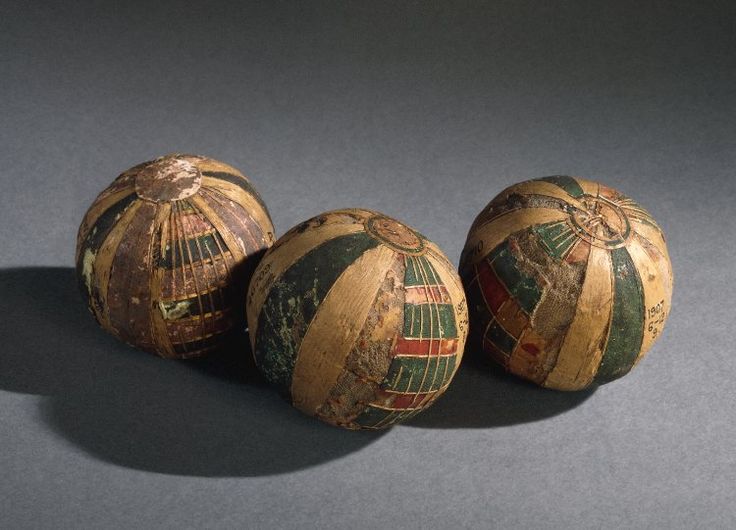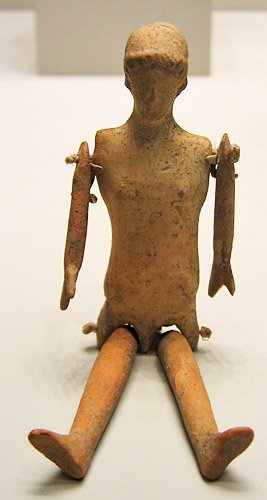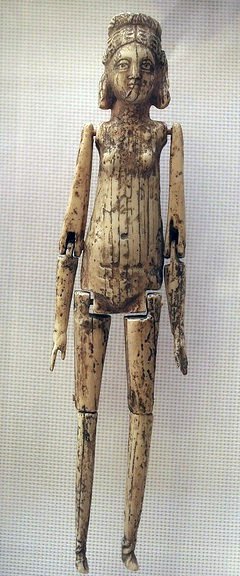Last updated on July 21st, 2022 at 10:44 pm
The toys that children play with can tell a person a lot about the society involved.
In Victorian Britain, the doll house became one of the most ubiquitous forms of play as the manufacture of detailed objects such as these was made possible on a large scale by the Industrial Revolution and the advent of manufacturing workshops.
Today video games are the paramount entertainment for children and teenagers as the Digital Age progresses.
Earlier types of play were more primitive, but they also reveal a considerable amount about how earlier societies functioned, none more so than the Romans.
Physical Activity
Roman children, whether boys or girls, played games that were firmly rooted in basic forms of physical activity as types of play.
For instance, swimming was widespread, particularly in areas near the sea, although the vast majority of the residents of Rome were never far from at least a river in which they could swim.

Running, wrestling and athletics were common, as they have been in virtually every other society since people first started organizing themselves into societal units.
Yet these basic types of physical activity also had competitive and cognitive edges, such as ancient forms of ‘hide and seek’ and ‘hunts.’ The Romans also had a version of games such as ‘tic, tac, toe.’
Dice, Marbles, and Puzzles
When it came to using physical objects as toys, the most common ones were those with which every schoolchild of the twentieth century was familiar.
For instance, something akin to marbles was collected and played with by Roman children, as were yo-yos, the latter of which had been in use since roughly the fifth century BC when they appeared amongst the Greeks.
The Romans also flew kites and used stilts as a form of entertainment. Puzzle games and board games were also played.
For instance, ‘noughts and crosses’ was played in Roman times, and there is archaeological evidence today from some carvings on a step of the Roman Forum in the very center of the city of Rome itself.
More sophisticated forms of these ranged from basic puzzle games, where pieces were moved around a board to form an object, not entirely unlike a basic jigsaw puzzle today, and played by infants, to more elaborate board games which required some considerable cognitive skills.
One of these was a game called tabula, which was similar to backgammon, while Roman children who were heading into what we would now define as the teenage years would learn to play ludus latrunculorum, a type of Roman chess or draughts.
War Games
Ludus latrunculorum is an example of a Roman game that may have been designed to foster strategic thinking in military terms.
The game was most likely invented as a primary way of understanding military strategy on the battlefield. In this respect, it mirrored many other types of play that Roman children, specifically boys, might have engaged in.
It was very popular to play with wooden swords and shields and for boys to organize themselves into mock armies who fought each other. This was all symptomatic of the Roman mentality.
These were people who perceived themselves to be rustic and militaristic Italians. As such, it was entirely fitting that adults would encourage boys to foster their military minds from a young age, particularly as the decades went by and Rome conquered more and more of the known world.
Moreover, in addition to fighting with wooden swords and shields, Roman boys would make up miniature chariots and race them in their local neighborhoods.
Roman Dolls
For Roman girls, the most quintessential type of toy in their world was dolls. Archaeological excavations over the years have uncovered hundreds of dolls from across the Roman Empire which point to the popularity of these toys among Roman girls.
These were carved and manufactured from various materials, cheaper dolls made from clay or wood. At the same time, more expensive and durable versions were fashioned from animal bone or ivory.
These would then be further augmented using cloth and even animal hair. Unfortunately, we have a bias in our understanding of these dolls towards the toys of upper-class Romans, as the substances these were made from have survived better over the centuries, while those of lower-class Romans have tended to break or disintegrate.

Those dolls were often decorated with miniature rings and headbands and pointed toward how the Romans perceived girls should dress and act as they became older.
Curiously enough, these dolls tended to have changed over the centuries as the fashions of upper-class Roman women changed. So, we have an instance where Roman dolls mimicked an early form of celebrity culture.
Thus, for instance, dolls from the third quarter of the second century AD seem to have hair designs that imitated how Empress Faustina, the wife of Emperor Marcus Aurelius, who reigned from 161 AD to 180 AD, wore her hair. Thus, dolls reflected what Roman girls were expected to aspire to when they became women.

Strangely enough, though, by the time they reached adulthood, the toys of their youth would long since have disappeared in most instances. It was a regular ritual in Roman times that when girls married, often when they were as young as 13 or 14, they would burn their dolls in a fire designed to symbolize leaving their youth.
Indeed those dolls which have survived down to the present day have generally been found in the graves of girls who died in infancy or childhood.
Those children who lived to become adults would have been largely burned. Thus, for both Roman boys and girls, the toys they played with in their younger years reflected how they were expected to behave when they became older.

